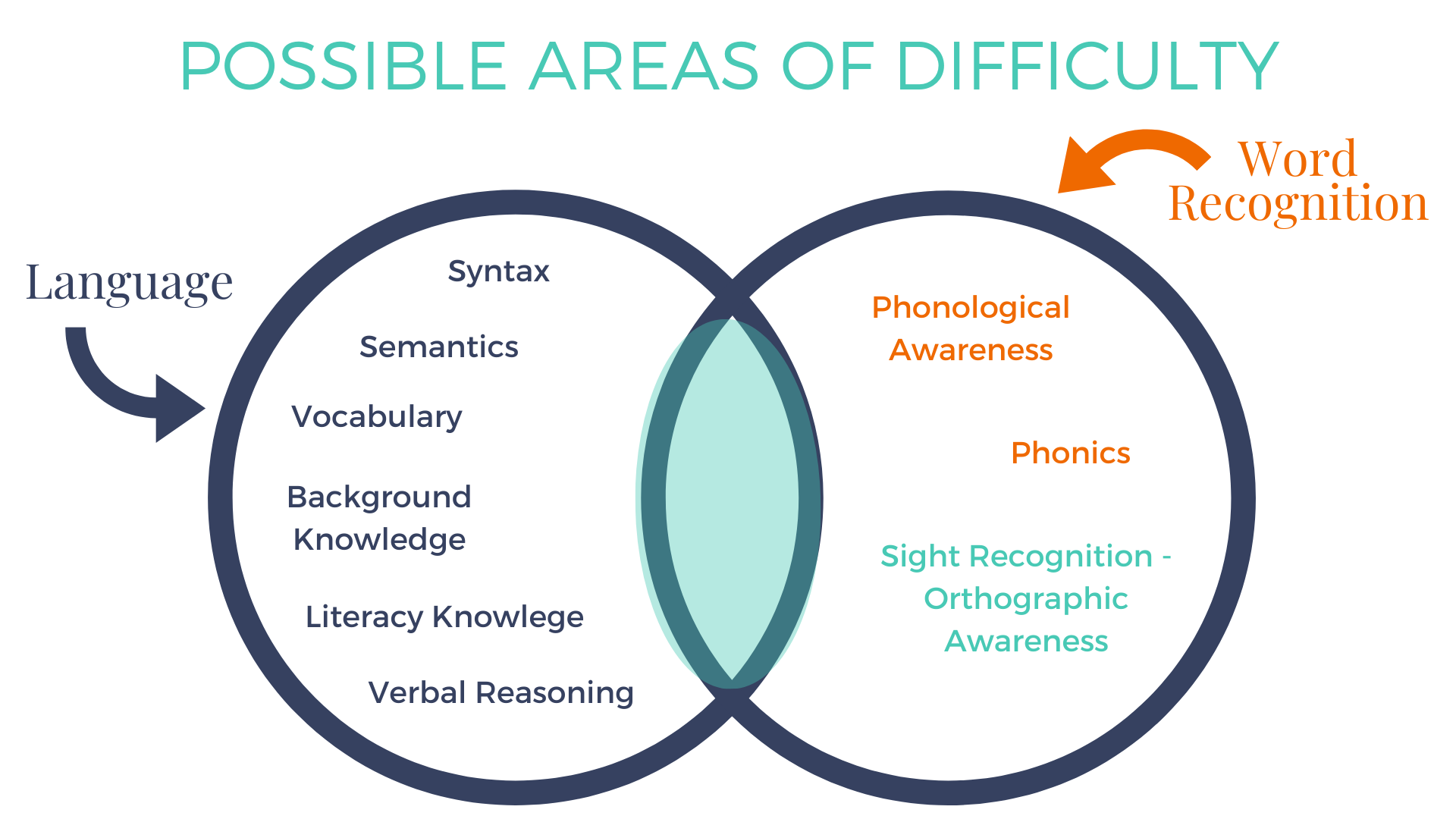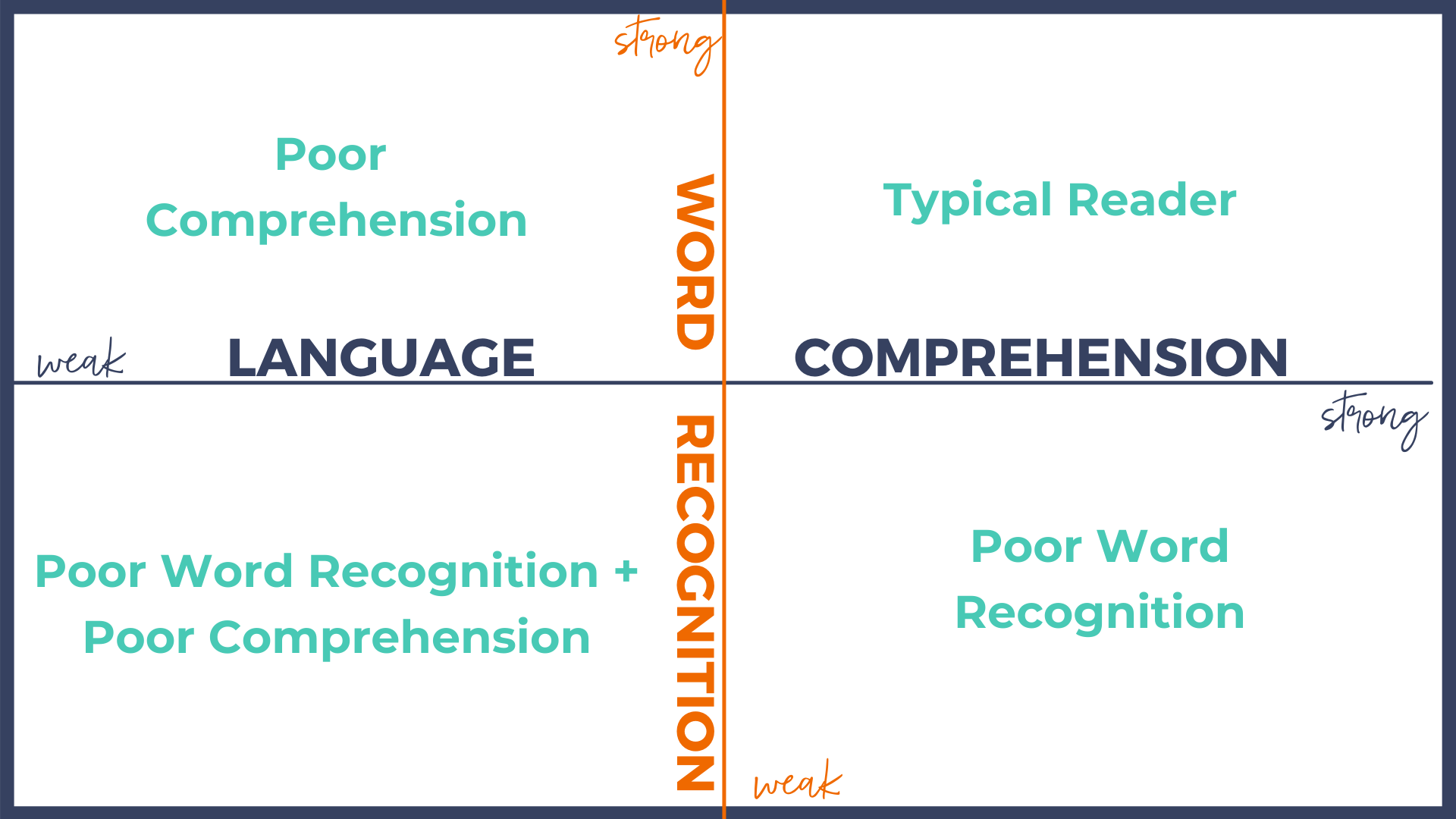Where Do Students Need Explicit Instruction?
Today we wanted to talk about why students struggle to read and what we need to do about it. Obviously, this is a loaded topic and one that we’ve written hundreds of blogs about. But it’s important that we really understand that not all reading struggles are the same. Students struggle for different reasons and in different capacities. To truly support our struggling readers, we must not only understand why students are struggling but also -
Where are students struggling to read specifically?
Which specific areas are causing students to be ineffective readers? Because the bottom line is if we are trying to support struggling readers, we need to stop applying one-size-fits-all approaches and we need to know what type of support is needed to get our struggling readers on track.
There are so many ways to conceptualize or think about literacy skills. It can sometimes feel completely overwhelming. We like to use a number of different analogies or visuals to think about reading and writing and specifically to think about how to best support students in their journey.
When students struggle with reading, there are two main areas we need to consider.
Can they sound out/recognize the words?
Do they understand what the words mean (by themselves and in the context of a full passage)?
These two concepts are well-known in the research as Word Recognition & Language Comprehension. There is a fantastic illustration that has widely become known as Scarborough’s Rope which is such a simple and yet effective way to understand how students’ literacy skills develop.
We need to make sure that as we are teaching reading - we are developing BOTH
Word Recognition & Language Comprehension Skills
We also need to be addressing all of the “subskills” that fall under Word Recognition and Language Comprehension.
Word Recognition = Phonological Awareness, Phonics, & Reading Fluency
and
Language Comprehension = Vocabulary, Syntax, Background Knowledge, Verbal Reasoning, etc.
When we are working with students in a general education classroom, we need to make sure we’re providing students with opportunities to grow their word recognition abilities while also giving them exposure to texts that will allow them to build language comprehension.
Often, especially when students are younger (Kindergarten through 3rd grade), their ability to read or sound out words and their ability to comprehend texts and language does NOT fall on the same level. Many students may be able to comprehend at a higher level than they can decode. This means we need to be providing them with language-rich opportunities such as reading aloud and talking about texts that they cannot yet decode.
As students get older, if they learn to read without difficulty and don’t have an underlying language comprehension difficulty - they can match their word recognition ability to their language comprehension ability which equals effective and efficient reading! Hooray!
However, many students have an inconsistency between their word recognition ability and their language comprehension ability.
This is why 34% of 4th graders weren’t reading at a proficient level based on the NAEP Report Card in 2019
Some of these students aren’t reading at a proficient level because they don’t have the Word Recognition ability.
Some of these students aren’t reading at a proficient level because they don’t have the Language Comprehension ability.
Some of these students aren’t reading at a proficient level because they have neither the Word Recognition nor the Language Comprehension ability.
It is our job as educators, interventionists, and speech-language pathologists to understand where those students who are struggling to read at a proficient level are breaking down.
Then we need to make sure that we are providing appropriate education and instruction based on the CAUSE of each individual student’s area of weakness.
If a student is struggling because they don’t have Word Recognition ability:
We must provide an intervention approach that will target phonological awareness & systematic phonics instruction and the automaticity of these skills.
It’s also important that we recognize just having Word Recognition skills isn’t enough. Students need to be efficient and automatic with these skills. We often use the analogy of learning to tie our shoes. In the beginning, tying our shoes is inefficient and awkward, and laborious, and quite frankly there are times that we decide it’s just easier to run around with our shoes untied. If students don’t have efficiency and automaticity in their phonological awareness and phonics skills - they won’t use those skills in their reading or spelling.
If a student is struggling because they don’t have the Language Comprehension ability:
We must provide an intervention approach that will target vocabulary development, the usage of appropriate syntax, the development of reading comprehension skills, and written responses.
Depending on the level of Language Comprehension difficulty it could be critical to make sure that a speech-language pathologist skilled at developing these abilities at the oral level is supporting a student. That said, for many students - these skills can still be developed in Tier 2 or Tier 3 reading intervention settings.
We need to make sure we’re not trying to support Language Comprehension difficulties with interventions designed to target Word Recognition deficits.
If a student is struggling because they don’t have the Word Recognition or Language Comprehension ability:
We must provide an intervention approach that will target phonological awareness, phonics, fluency, vocabulary development, the usage of appropriate syntax, the development of reading comprehension skills, and written responses.
This takes longer and this is more in-depth in terms of scope and sequence.
And MANY students actually DO struggle in both areas, and as students grow older the likelihood that they will need intervention support in both areas increases significantly.
It is of critical importance that we understand where our students are and what their needs are so that we can effectively support them in gaining the skills they need to develop as readers and writers. Failure to address all levels of difficulty creates lasting impacts on our struggling students and therefore it is critical that we have a full understanding of our students’ strengths and weaknesses.
The best way to know whether your students need Word Recognition support, Language Comprehension support, or both, is through assessment and data tracking. When we don’t know exactly what our students need, we can very easily miss some of the skills they MUST develop to read and write effectively and efficiently.
Now, we recognize that this sounds like a lot. We are here to assure you that it doesn’t have to be hard! If you’re ready to jump in further to understand what this needs to look like in order to get struggling readers to grade level, then check out the video below to learn more about the different kinds of reading struggles and how we can best support them! Then, grab our Science of Reading Blueprint. This blueprint will help you understand the 3 key scientific models that drive effective literacy instruction, learn how to integrate the research into practice, and provide simple checklists that will help you weave the science of reading into your instruction.




